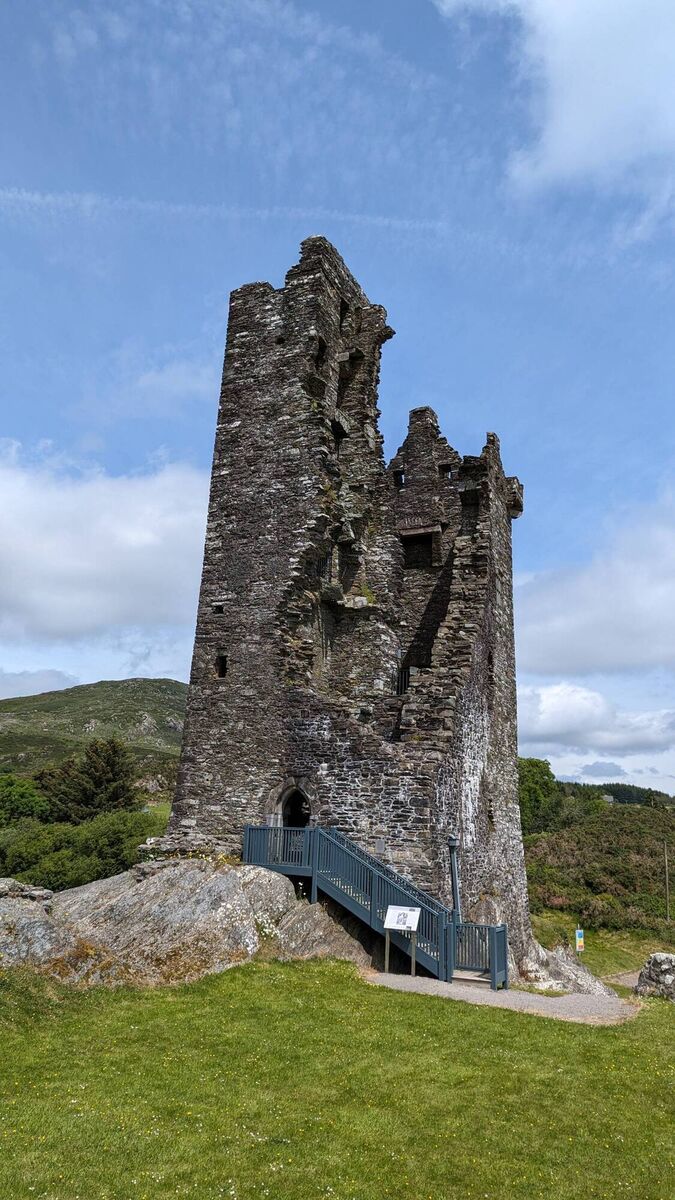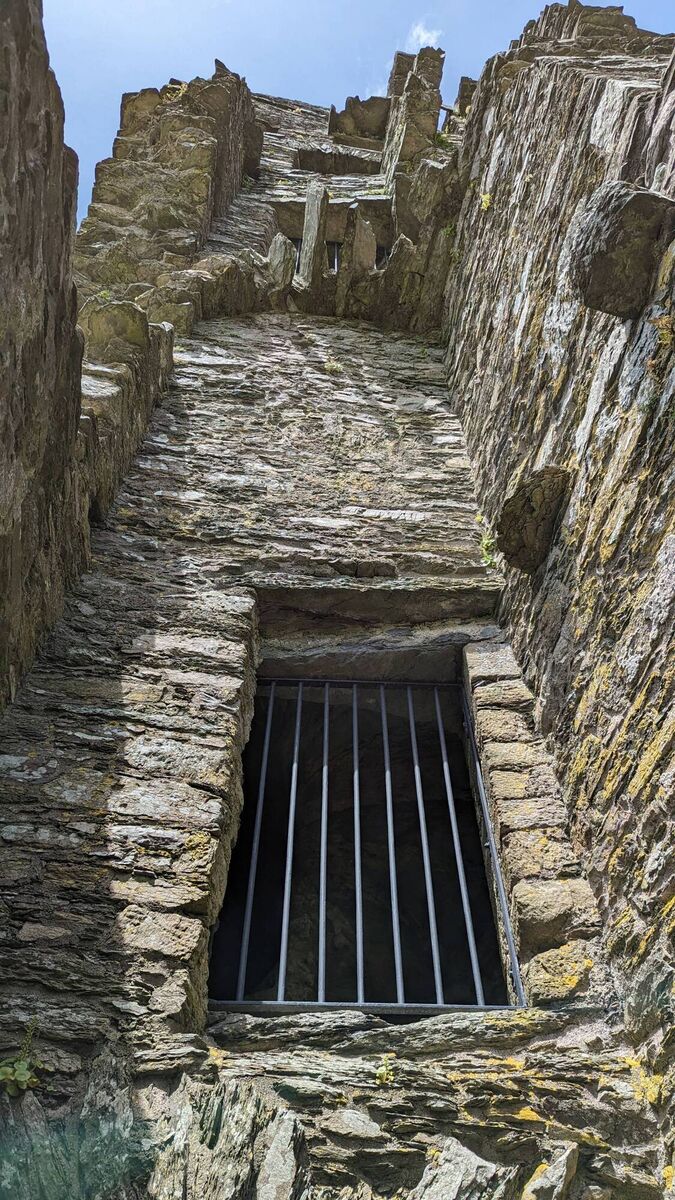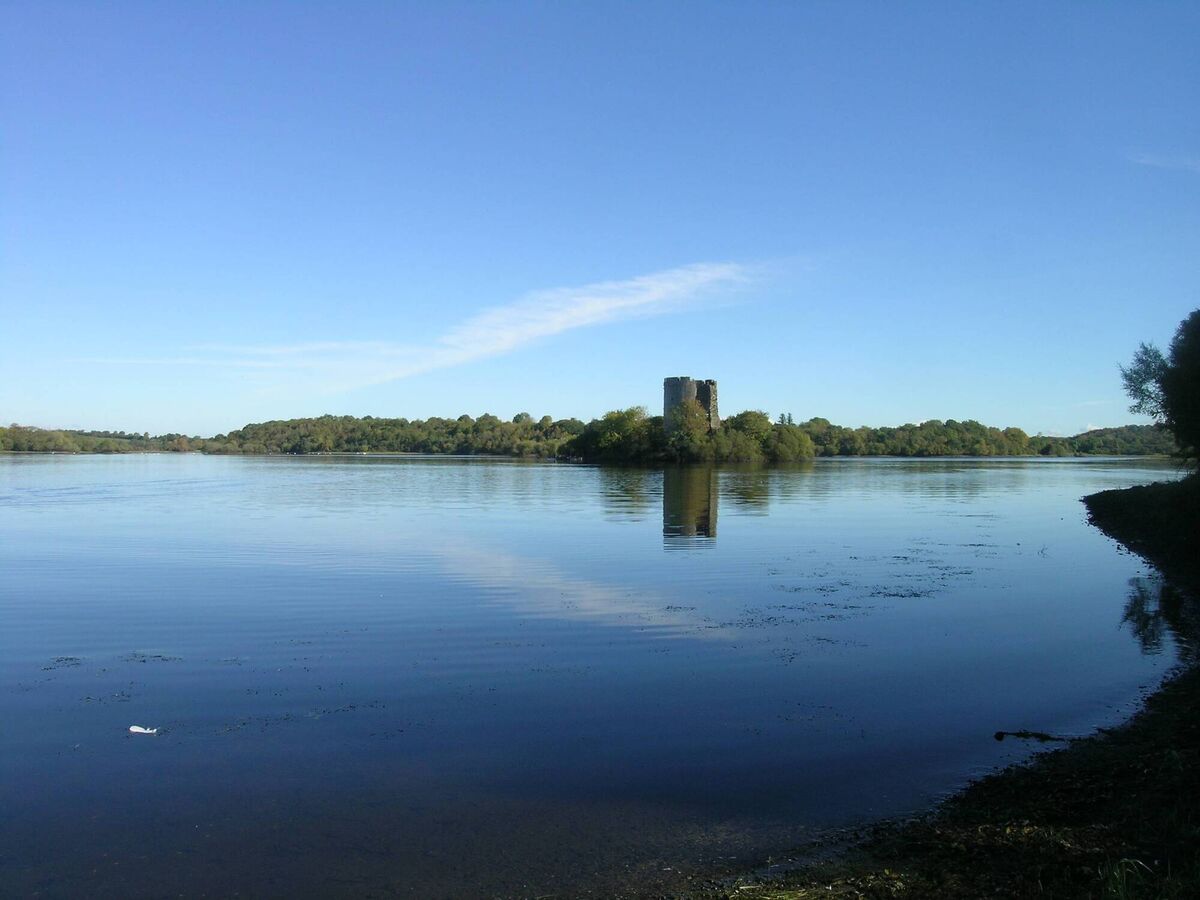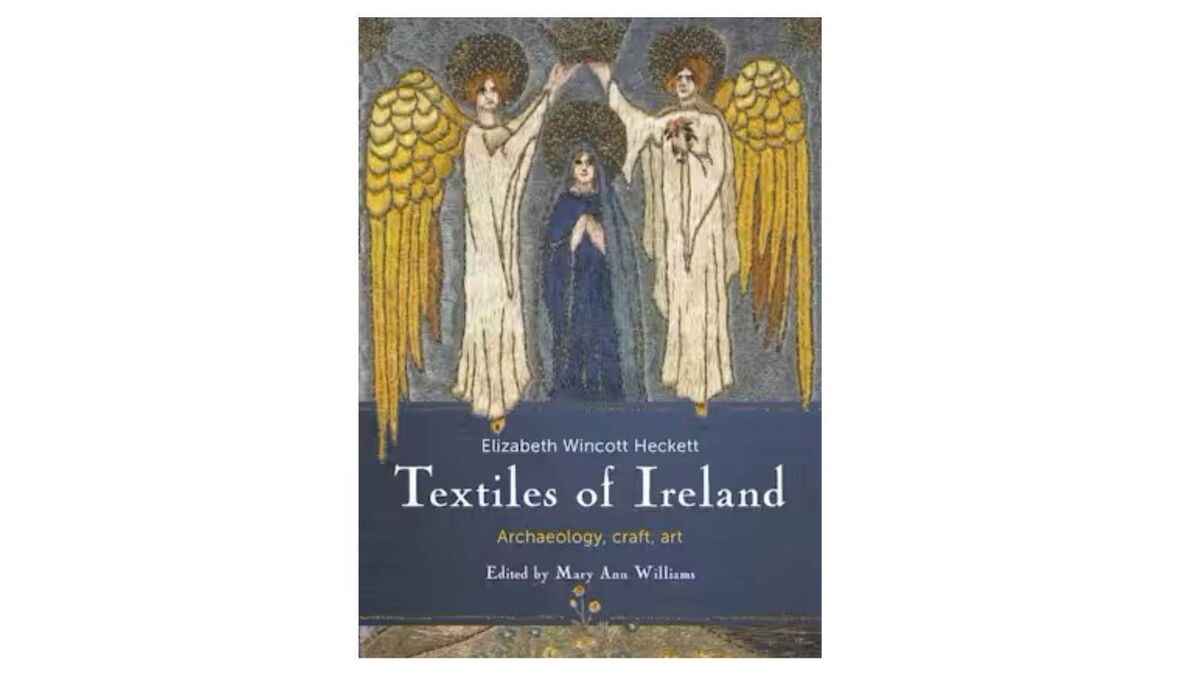Textiles of Ireland: Gold lace found in sacked castles

Castledonovan, County Cork, Ireland. Picture: Photographic Archive, National Monuments Service, Government of Ireland/ Rubicon Heritage
The term ‘lace’ has a long history that pre-dates the use of the word as understood nowadays. In the English language the noun 'lace' and the verb 'to lace' are related to the Old French word 'laz'. This usage may have accompanied incomers from Normandy into England after the conquest of the Anglo-Saxon kings in the 11th century (AD 1066). The words lace and to lace have been used for the thin bands made from textile strands twisted together. These laces tied together the bodices of doublets and dresses; doublets and hose (stockings) were also tied together this way. Modern French still uses the verb lacer in ‘to lace, or to do up’ shoes. Lacet is used in chaussures à lacets (lace-up shoes). Modern English also continues to use ‘shoe-lace’ as the correct term for the flat or rounded cord put through the several holes in a shoe, and tied together tightly.
Examples of both expensive and cheap metal lace have been found in three Irish castles. These date to the time of the 17th-century European religious wars, and most especially to the dreadful war in Ireland, waged from 1649 to 1660 by Oliver Cromwell, known in England as 'the lord protector'.

High-quality laces were excavated at Clogh Oughter, County Cavan and Castle Donovan, near Drimoleague, County Cork. The laces survived because rooms and courtyards of castles were destroyed and covered with rubble. A lace fragment of poor quality was also found in Dublin Castle.
Two major changes developed the easy availability of gold and silver threads in Europe in the 17th century. The first, the significant increase of gold and silver that poured into the continent in the 16th and 17th centuries, was largely secured by the kings of Spain and Portugal who, in conquering South America, became enormously rich. This wealth then spread through royal courts and aristocratic families in many European countries, and some part was generously used to decorate luxurious clothes with gold and silver embroidery and laces.

The second change is that, from the late Middle Ages onwards, the making of metal filaments and decorative laces became very profitable as the methods of production were changed by the new techniques of ‘casting’ and ‘drawing’. Gold thread for laces of this period was not made of pure gold but from a rod of silver covered with gold leaf, which was fused together in a furnace. The rod was drawn out and then flattened between rollers so it could be spun around a fine core of silk or linen to make the metal thread. This is a much cheaper and quicker way of producing the threads than the ‘beating’ and ‘cutting’ techniques of antiquity and the early medieval period. Casting and drawing enabled the production of great quantities of metal thread, so that decorative laces became widely available.

These factors enabled wealthy people to demonstrate very clearly their power and importance through decorating their clothing. Also, a wardrobe of high-class dresses and suits made from expensive cloth with gold and silver decorations could be used as easily for currency as owning a bag of coins. It seems that individual craftsmen and women in Europe were making such laces and braids for wealthy patrons. Indeed discarded pieces of metal thread were returned to the gold- and silversmiths and thread-makers to be melted down to be used again. It is likely that some laces would be imported from Italy since cities like Florence were centres of luxury cloth-making and decorative trimmings. It may be that in Ireland merchants and even smugglers were bringing these fashionable items ashore to sell to the gentry and aristocracy.

The survival, in particular, of the fine lace from Clogh Oughter and Castle Donovan is most unusual. The recycling of expensive clothes and their embellishments was very common at this time — a lot of it would have been returned to the makers to be melted down and reused. In the Clogh Oughter lace pieces, the thread used in the main systems, and the finer threads, consist of a twisted silk core covered with metal stripping. Known as orris lace, the first piece is a luxurious type of gold lace, being a narrow weave band in a chevron pattern with a wide rib at each side and in the centre.

The two laces from Clogh Oughter Castle, County Cavan were analysed by scanning electron microscopy (SEM) at University College Cork and the Conservation Department of the National Museum of Ireland.
The SEM analysis showed a very high concentration of sodium chloride. This indicates body ether fluids or the decay of bodily tissue over a period of time. It may well indicate that the laces were worn by a defender of the castle during the Cromwellian wars. Not far from the laces the head and shoulders of a man was hurriedly buried; also nearby a damaged finely decorated pistol was found.
From Castle Donovan, County Cork, seven pieces of a length of gold lace, crumpled together, were found with other domestic items in the main chamber where fighting had taken place when the castle was attacked by Cromwellian forces in 1650. Normally, these small pieces of lace would have been used again, perhaps to decorate a child’s dress, or would have been returned to a goldsmith to be melted down, as was the custom. However, the destruction of the castle covered the pieces for generations, preserving the lace.
These seven pieces had been stitched to a garment, but later were cut off in small pieces. Silk threads were stitched by hand along the lace edges but had also been cut off. There are tiny remnants of clothing on the undersides of the lace. Three pieces have been folded or mitred, then stitched so that they outlined the panel of a skirt attached to a bodice or doublet.
At Dublin Castle a piece of cheap ‘gilt’ lace was found that perhaps had been worn by a soldier. The verdigris on the metal thread suggests that it originally had a high copper content and may be an example of ‘Nuremberg’ gilt lace, in which 2% silver gilt on 98% copper could be made to appear like gold.

An early 17th-century portrait of Sir Walter Raleigh and his son, also Walter, shows the boy wearing a blue silk suit of doublet and breeches decorated with double lines, very probably of silver lace, that emphasise the cut of the clothes (National Portrait Gallery, London, 1602).
Three of the fragments of gold lace found at Castle Donovan had been carefully folded and stitched so they would have outlined a skirt panel attached to a doublet, as shown on the Raleigh son’s outfit.
The painting of Domhnall O’Sullivan Beare (1560–1618) portrays this Irish chief c. 1605 when he was in the service of King Philip III of Spain in Madrid. He is shown with his trunk-hose completely decorated with silver lace in a most elegant way.

- An excerpt from by Elizabeth Wincott Heckett, edited by Mary Ann Williams This material comes from Chapter 28.







